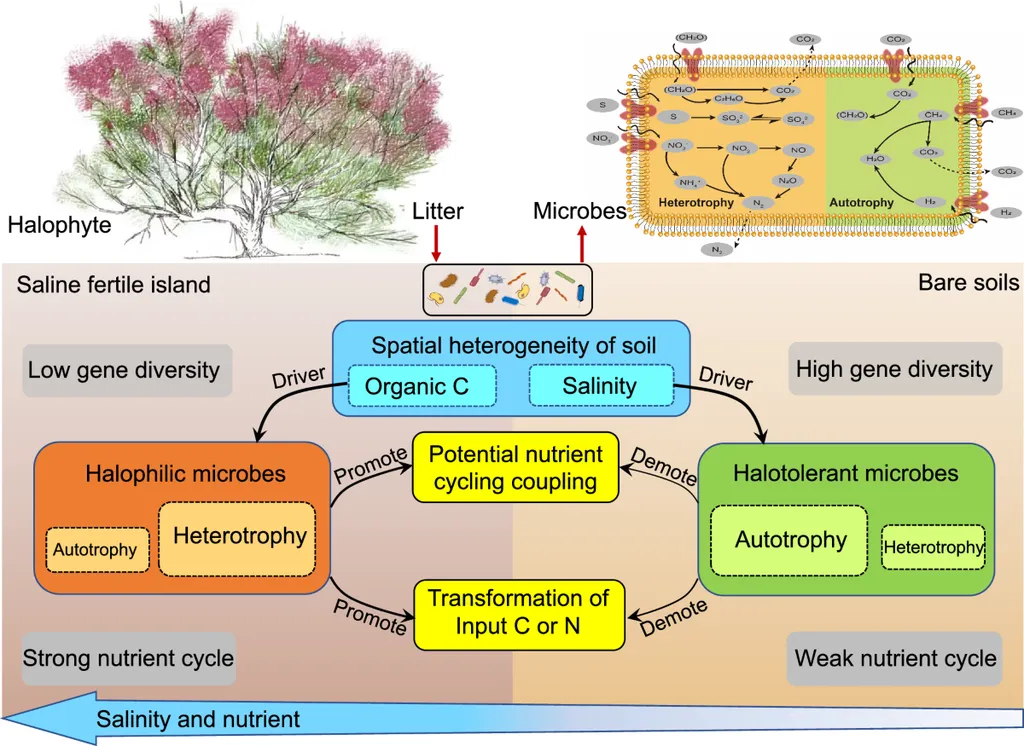Along the sun-kissed coastlines of Ghana, where the Atlantic Ocean meets the land, a silent battle against salt is being waged. Not by man, but by nature itself, in the form of resilient plants known as halophytes. These salt-tolerant species, thriving in the littoral soils, are the subject of a groundbreaking study led by Kwabena A. Sanleri from the Department of Crop Science at the University of Cape Coast. The research, published in ‘Plant-Environment Interactions’ (which translates to ‘Plant and Environment Interactions’ in English), is shedding light on the potential of these halophytes to combat soil salinity, a pressing issue that affects agricultural productivity and land use globally.
Sanleri and his team identified and evaluated the growth response and desalination potential of five halophyte species: Ipomoea aquatica, Lactuca taraxacifolia, Paspalum vaginatum, Sesuvium portulacastrum, and Talinum triangulare. The study employed deep learning image recognition to identify plant species, followed by a greenhouse experiment to assess their response to varying salt concentrations and soil types.
The findings are promising. “High salt concentrations generally reduced plant growth rates and biomass accumulation,” Sanleri explained, “but we found that arable soil improved halophyte performance significantly compared to sea sand.” Among the species studied, Sesuvium portulacastrum stood out, exhibiting enhanced performance at elevated salinity and demonstrating superior salt ion accumulation in its roots and leaves.
The implications of this research are far-reaching, particularly for the energy sector. Soil salinity is a critical issue in coastal areas, where desalination plants are often located. These plants require vast amounts of land, and the soil’s high salt content can lead to infrastructure damage and increased maintenance costs. Halophytes like Sesuvium portulacastrum could potentially be used to desalinate the soil, reducing these costs and improving the efficiency of desalination plants.
Moreover, the use of halophytes for phytoremediation could open up new opportunities for sustainable land use in coastal areas. “This study shows the potential of Ghana’s halophytes in addressing soil salinity-related challenges,” Sanleri said. “They could be used to reclaim saline soils, making them suitable for agriculture or other uses.”
The research also highlights the importance of understanding the nutritional, ecological, and medicinal significance of halophytes. As the world grapples with climate change and its impacts on agriculture, these resilient plants could play a crucial role in ensuring food security and sustainable land use.
In the future, we may see halophytes being used not just for desalination, but also for bioenergy production. Some halophytes have high lipid content, making them potential candidates for biofuel production. Furthermore, the use of deep learning image recognition in this study paves the way for more efficient and accurate identification of plant species, which could be beneficial for various applications in agriculture and environmental management.
As we look to the future, the humble halophyte, thriving in the harsh coastal environment, could hold the key to addressing some of our most pressing environmental and energy challenges. The research led by Sanleri is a significant step in unlocking the potential of these remarkable plants, offering a glimpse into a more sustainable and resilient future.

